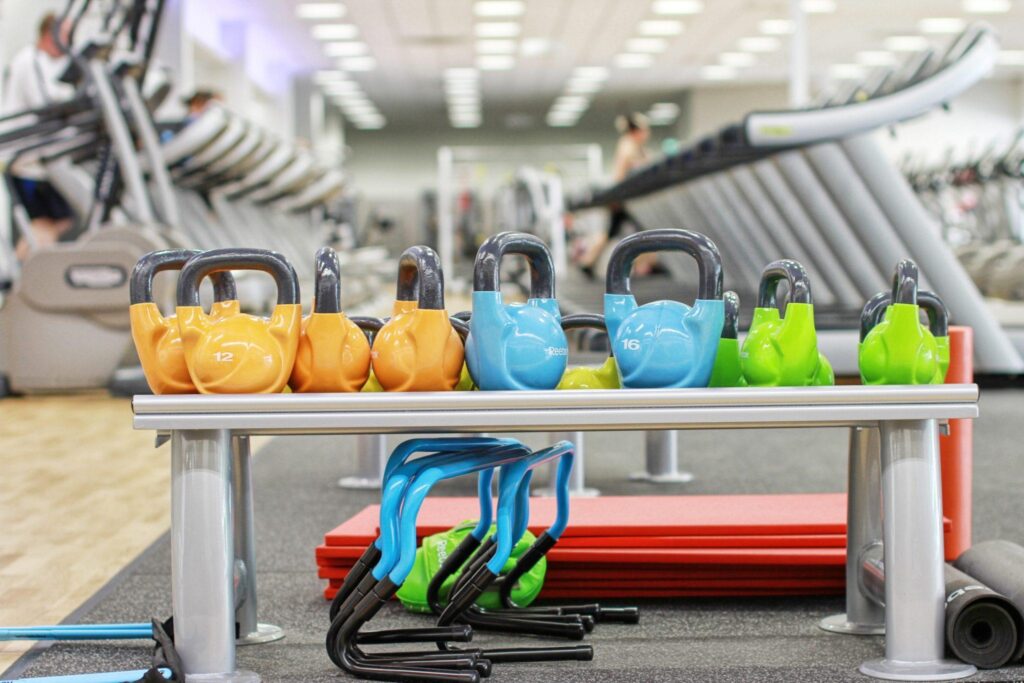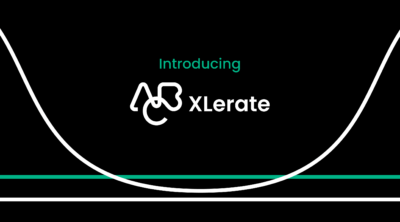When calculating the economics of owning a gym, there are several key areas to look at. Startup costs can vary massively as can running costs. This is because while you may have large start-up costs, in the beginning, you don’t need to pay these costs monthly. But things like salaries, maintenance, streaming platform, and editing software are ongoing costs.
As the economics of owning a gym can vary massively, exact figures are individual to your business. With a huge rise in digital and remote fitness this year, your technology costs and social media marketing budget look set to increase. In this article, we take a look at what it means to run a hybrid fitness business in 2021 and the gym costs you need to consider.
Skip ahead to:
- How Will COVID-19 Shape the Fitness Sector in 2021
- Running a Hybrid Fitness Business in 2021
- 11 Costs to Consider When Running a Gym in 2021
How Will COVID-19 Shape the Fitness Sector in 2021
Every business has its own 2020 story to tell. Over the past year, everything we thought we knew about the fitness industry has changed. While a level of uncertainty remains, it’s safe to say that those who have adapted to change today will have a much higher chance of survival in the future. With talks of a vaccine all over the world, a post-pandemic world feels like it’s edging closer bit by bit. The future of fitness is poised for further change as we all deal with a new way of working and living.
The massive acceleration in digital fitness looks set to continue as the fitness industry continues to pivot towards technology-centered solutions. As the end of the year looms, the fitness industry will continue to evolve and adapt. No doubt hygiene standards will continue to be high with online fitness offerings an essential part of a successful business. The topic of outdoor fitness is also gaining traction as it can create more safety for users.
The team at ClassPass has recently released its ClassPass Fitness Trends and Wellness Predictions and what to expect in 2021. Here are the main takeaways:
- Lunchtime is the new preferred workout time.
- Geographical location is no longer important.
- The search for outdoor classes is up 200%.
- Corporate wellness is a must for companies.
Many people are now using their lunch break to jump on a quick fitness class stream without leaving the house. While others are actively searching for outdoor classes where they can maintain social distancing and enjoy being out in nature with plenty of fresh air. The COVID-19 crisis has had a massive impact on the fitness industry and continues to affect the way consumers want to work out.
Running a Hybrid Fitness Business in 2021
It’s normal to associate exercise with a trip to the gym or fitness studio. But in 2021, digital workouts will become the norm with fitness brands fully embracing an omnichannel approach. The businesses that will survive are those who adapt to a hybrid business model. By offering digital and in-person gym memberships and pricing, you will be able to reach more people. This massive shift is sure to spark innovation in digital fitness with brands scurrying to find the best way to connect and engage with more people.
Running a hybrid fitness business means that alongside your in-person classes and studio experience, you also have a digital fitness platform. This could include live class streams, an extensive library of pre-recorded content, on-demand challenges, and more. The development of fitness apps and streaming platforms gives brands stronger financial security. The best fitness brands are those that can deliver the same kind of energy and buzz of a live workout class in a virtual setting.
Although restrictions can change quickly, one thing remains: people want to stay healthy. With governments instructing the public to exercise and stay healthy, health is really at the forefront of the consumers’ minds. 2021 will not be business as usual but the fitness industry still has a responsibility to help its members live healthier lives, whether it’s in-person or online.
The Fitness Founder’s Podcast explores this topic even further in a recent episode on how the fitness industry has changed. Industry experts discuss how businesses need to adapt to a hybrid model or get left behind.
11 Costs to Consider When Running a Gym in 2021
It’s clear that the way you run your gym has changed. From increased hygiene and safety protocols to new outdoor bootcamps and digital fitness platforms, brands have had to adapt quickly. Let’s take a look at the costs gym owners need to consider when running a fitness business in 2021.
The Customer
Engagement Playbook
for Your Fitness
Business
Discover more 1. Location
Your physical location will cost a lot of money and vary depending on the size and location. You have the option to buy or lease a space. Whichever you choose, you will likely have either monthly mortgage or lease payments to maintain. You also need to consider the cost of running a location at a reduced capacity so that you can stick to local social distancing guidelines. Your location and size will depend on your competition, whether you’re a franchise or independent, and how you want to set up the location. Your ongoing costs for your location will also include utility bills like water, electricity, trash, air conditioning, and internet.
2. Video and Sound Equipment
For teaching classes online, you need the right video and sound equipment. Start by thinking about how your audience will watch your content and work back. If the majority are watching on a high-definition TV then it’s worth investing in a higher-end camera than say, watching on a mobile phone. To deliver a high-quality digital fitness experience, your sound and picture need to be crisp. You will likely need equipment such as cameras, tripods, microphones, lighting, screens, and laptops. A professional camera that can record in 4K for smoother and precise motions starts at $1,600 going up to $3,500 and above.
3. Digital Fitness Streaming and On-Demand Platform Software
To take your business online and bring new members digital content and class streams, you need the right platform. Generally, streaming and on-demand platforms charge a monthly cost. They allow you to host all your videos online and drive value to your members. Member management software like Glofox has an integrated live streaming and on-demand platform. So, you can continue to manage members both digitally and physically through one portal. You would be looking at around a starting price of $100 per month for a solution like this.
4. Insurance
Insurance and legal costs are a part of any business. Unfortunately, it’s not optional especially when there’s exercise involved. In a gym, members and employees are naturally more at risk of accidents when there’s heavy equipment around. With hundreds of people visiting you and exerting themselves, it’s vital that you protect yourself from liability if anything goes wrong. Consider things like worker’s compensation, general liability, and equipment breakdown coverage. It’s a good idea to set aside at least $10,000 in annual premiums to cover your insurance.
5. Licenses, Permits, and Legal Costs
As a gym business, it’s crucial that you have all the licenses and permits you need to operate legally. This includes health and safety certificates as well as your business license. If you plan on taking your workouts outdoors into a public place, make sure you have the right license, permit, and insurance to cover yourself if anything goes wrong. Naturally, all of these things rack up costs in legal fees and permits. Set aside about $3,000 to cover the basics in your first year. You should also stay up-to-date with federal and local requirements and pay for any permits and licenses as needed.
6. Fitness Equipment and Maintenance
Another big upfront cost is fitness equipment. You can approach this in two ways: buy or lease. With leasing, you end up paying more over time. However, when you buy the equipment it does depreciate. The best choice is down to your current situation. For both options, you will need to maintain the equipment. The cost of leasing gym equipment could be upwards of $100,000 every year while you could pay $50,000 to buy the equipment outright in a small gym.
7. Staff Salaries, Training, and Upskilling
Salaries, training, and upskilling your staff all need to be factored into your budget. With increased cleaning and hygiene protocols, you may need to hire more cleaning staff so that you can disinfect your facility effectively throughout the day. Another cost to consider is the training and upskilling of employees. COVID-19 has opened up new opportunities for your team. Upskilling current staff members to your digital offering may be more cost-effective than hiring a new digital team.
8. Marketing, Advertising, and Website Costs
Investing in your marketing and advertising is an important part of the success of your fitness center. With consumers spending more time on social media and online, digital marketing is a key part of your strategy. Marketing doesn’t need to be overly elaborate to be effective. Tools like Facebook Live and Instagram Stories and Reels are free to use and great for building an engaged audience. Generally, small businesses allocate about 7% of revenue to their marketing budget. Don’t forget about your website costs and hosting as well. A website can cost as little $300 to more than $6,000 from a designer or developer.
9. Member Management Software
Your member management software is an essential part of the overall member experience. It allows you to track payments, manage members, and grow your community from one place. By simplifying your business, you can streamline multiple processes and create the best possible member experience. Management software will also help with payroll, automate bookings, improve lead generation, and free up your time to focus on growing your business.
10. Digital Content Creation and Editing Software
Digital content creation takes time and effort. You will either need to upskill existing employees to create content or bring on a digital team full-time. Although your instructors and personal trainers will be streaming their own classes and likely setting up the equipment, on-demand content needs to be edited and polished off. For this, you will need access to editing software as well as music licensing. Video editing software is available at one-off costs as well as monthly payments, depending on the software you choose. Apple’s Final Pro Cut X costs a one-off fee of $299.99. While Adobe’s Premier Pro requires an annual plan and Creative Cloud subscription for just over $30 per month.
11. High-Speed Internet
Although your internet comes under a bill, it’s essential that your internet can handle everything you throw at it. There is only so much time your members will stick around for with a live stream that’s crackly and frozen. It only takes one bad experience to leave a negative lasting impression. To host a live stream, you need to have a good internet connection that’s stable. Make sure to check your upload speed. Anything around 4-5 Mbps upload bandwidth is suitable. As with all of your equipment, it’s important to test your internet connection before going live. You need a high-speed internet connection from wherever you plan on streaming from. This includes your gym or health club, an outdoor workout space, or an instructor’s home studio.
In Summary
With a massive shift to digital fitness and the need to develop a strong fitness community more than ever, the fitness industry has adapted to the coronavirus pandemic. As the need to bring in more technology-focused solutions rises, the economics of running your own gym in 2021 will evolve. Your digital fitness platform and content creation look set to take center stage in order to keep up with consumer demand and your competition. To operate smoothly and effectively, your gym needs the right people, software, and equipment. Every gym setup is unique with its own set of challenges. By taking a look at the different parts of your business, you can figure out the total costs according to your exact needs.















